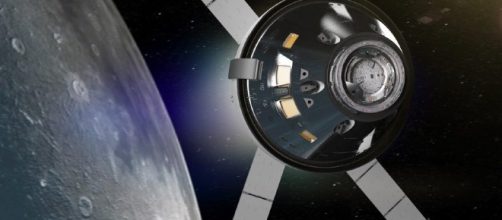The Wall Street Journal has run a story describing the back scene maneuvering happening to formulate space policy at the Trump Administration. As advocates of commercial space and champions of the old, NASA-centric way of doing things argue the future direction of the space program, President Donald Trump has yet to name a NASA Administrator, though Rep Jim Bridenstine, R-Oklahoma remains the front-runner for the job. Meanwhile, a prominent member of the NASA “beachhead team,” Charles Miller, now embedded at the space agency headquarters, has envisioned the idea of an internal race between NASA and one or more of the commercial space companies to put a crew of astronauts into lunar orbit by 2020.
In an email to former Speaker Newt Gingrich, a top advisor to President Trump, Miller, a former NASA official and the head of a think tank called NextGenSpace, makes the following suggestion that the space agency, ““hold an internal competition between Old Space and New Space” with the goal of finding the least expensive way to return to the moon. The idea is that there would be “private American astronauts, on private spaceships, circling the moon by 2020.” NextGenSpace had conducted a NASA funded study advocating a cheap, commercial return to the moon..
Currently, NASA is developing the Orion spacecraft and the heavy lift Space Launch System as part of its Journey to Mars program. The first crewed flight of the Orion around the moon is currently envisioned for the 2021-23 timeframe.
But many commercial space advocates, including Miller, suggest that cheaper ways of exploring deep space could be acquired commercially. SpaceX is developing a heavy-lift launcher called Falcon Heavy which, albeit less capable than the SLS is, would be cheaper to build and fly. Blue Origin is planning the New Glenn launcher, thought to be comparable to the Falcon Heavy, and then the New Armstrong, believed to be as capable as the SLS would be in its final form.
The Wall Street Journal article does not expand on what form the competition would take on. Would the contractors building the Orion/SLS be called upon to develop a plan to orbit the moon by 2020 along with one or more commercial companies such as SpacxeX and Blue Origin?
Or would the competition be more like NASA’s commercial crew program, now developing the first commercially operated spacecraft, or even the Google Lunar X Prize, the race to land the first private lander on the moon? Whatever form the competition takes, the idea represents some original, outside the box thinking.
The public/private moon race also, it is hoped, avoids a conflict with Congress and aerospace contractor support of the Orion/SLS system. In the wake of President Obama’s cancellation of the Constellation program, Congress was obliged to be very particular about the design of a heavy lift vehicle to deny NASA any wiggle room as to building the rocket and, coincidentally benefit5 aerospace companies that employ people in congressional districts.
The result was a more expensive rocket than had NASA been given free rein to build it.
Congress would be very reluctant to cancel the second launch vehicle project in seven or eight years, especially with metal being bent for a 2018 test flight. The Miller proposal simply puts the Space Launch System to the test against commercial systems in a new race to the moon. Even, as many including Miller expect, the Orion/SLS loses, it would still be available for Mars while commercial systems are used to explore and settle the moon. In the meantime, the contractors building the Orion/SLS would have every incentive to cut costs. Everybody wins, and America has something wonderful to look forward to for the end of the first Trump term.

